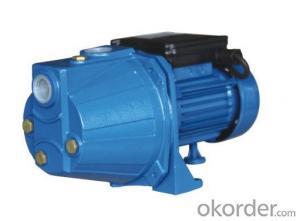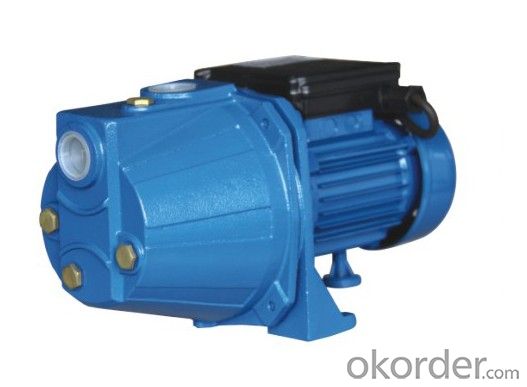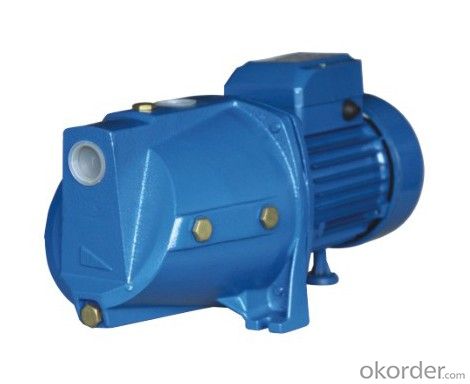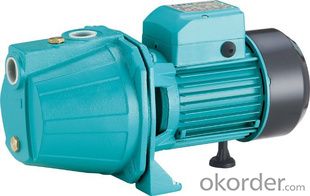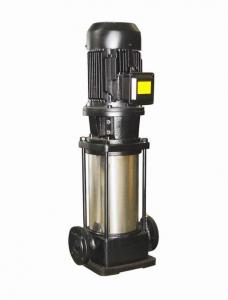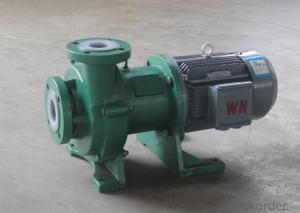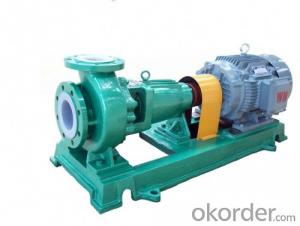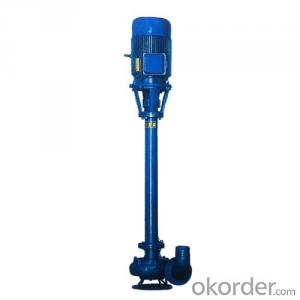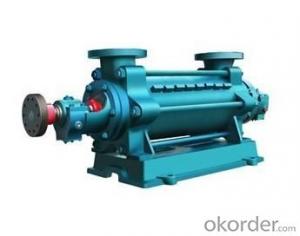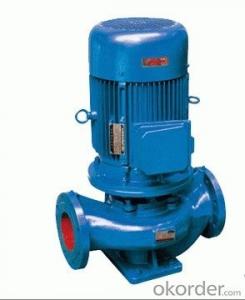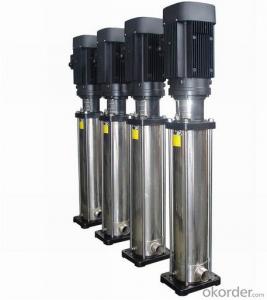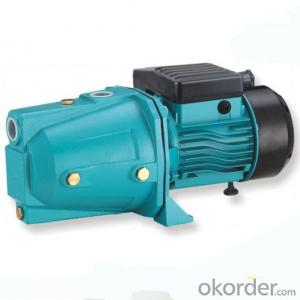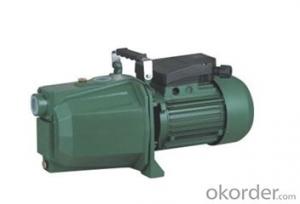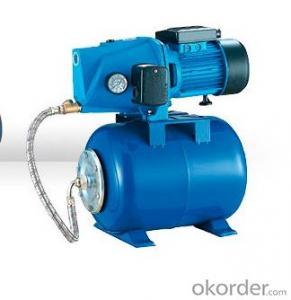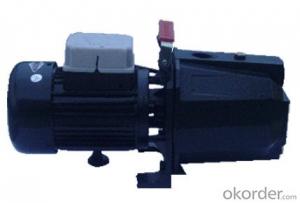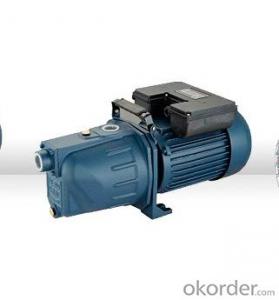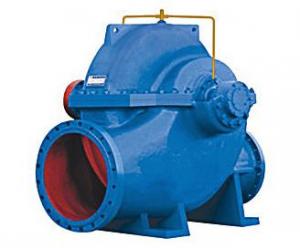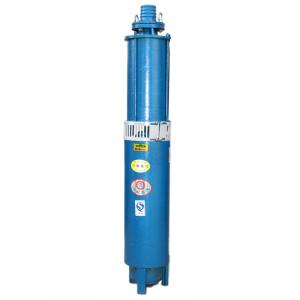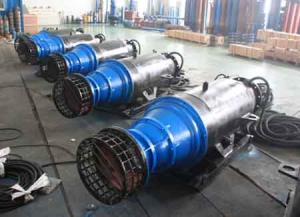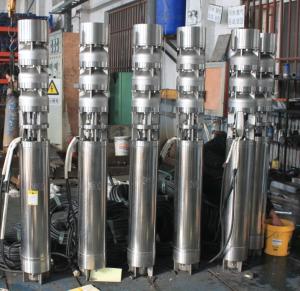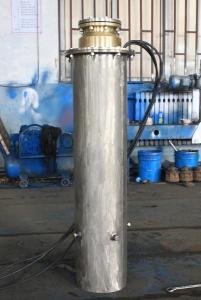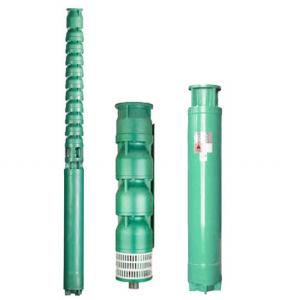Self-Priming Jet Pump for Irrigation (JET60S)
- Loading Port:
- Shanghai
- Payment Terms:
- TT OR LC
- Min Order Qty:
- 1 unit
- Supply Capability:
- 1000 unit/month
OKorder Service Pledge
OKorder Financial Service
You Might Also Like
Basic Info of Self-Priming Jet Pump for Irrigation (JET60S)Model NO.:JET60S
Performance:Self-Priming Pump
Applications:Household & Agricultural Pump
Working Fluid:Water
Type:Jet Pump
Export Markets:Global
Application of Self-Priming Jet Pump for Irrigation (JET60S)
For water supply from wells or reservoirs.
For domestic use. for civil and industrial applications.
For garden use and irrigation
Operating conditions of Self-Priming Jet Pump for Irrigation (JET60S)
Maximum fluid temperature up to +60º C
Maximum ambient temperature up to +40º C
Maximum sand content: 0.25%
Total suction lift up to 8 m.
Continous duty
Motor and pump
Rewindable motor
Three-phase: 380V-415V, Single-phase: 220V-240
Insulation: Class B
Protection: IP44
Structural characteristics of Self-Priming Jet Pump for Irrigation (JET60S)
Pump body: Cast iron
Front cover: Cast iron
Diffuser: Noryl
Impeller: Brass/Plastic/PPO
Mechanical seal: Ceramic and graphite
Shaft: 45# steel/stainless steel
Motor case: Aluminum
Warranty:1 year
(according to our general sales conditions)
Performance Table
FAQ
Q: If I increase the power of the motor, must I also increase the power of the inverter?
A: You must select the size of converter that allows maximum absorption of the electric motor.
Q: Do you have pumps with grinders?
A: Yes, the WQ models.
Q: How long is your warranty?
A: Unless otherwise expressly authorized in writing, by specifying a longer period or different conditions, CNBM states that, for a period of twelve (12) months from delivery date, all Products supplied are free from defects in materials and workmanship, and conform to the applicable specifications. Either the delivery documentation or the invoice must be provided to prove delivery date. In absence of such documents, the production date appearing on the product label may suffice.
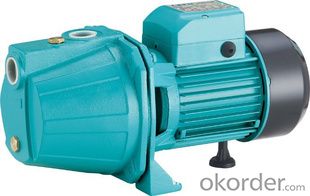
- Q: How much should I look for paying for my 1998 Honda Accord Water Pump??? With Labor and Materials?
- Your okorder /
- Q: what makes pump come on every 10 seconds when water is on
- Your tank is water logged add air to the top of the tank and this will take care of the problem.
- Q: The leak is in the same area as my water pump, but when I jacked my car up yesterday, I wasn't able see my water pump. It's a 99 Saturn SL1.With the leak, it leaks very slowly, and it only leaks about a few ounces of fluid at a time. It mostly only leaks when I start the engine while its cooled down, and it's leaking down the passenger side of my engine.If it was a bad water pump, would the antifreeze leak without stopping until all of the antifreeze is gone?
- it can be leaking also from your radiator..you might want to check the cheaper solutions first. replacing a water pump is very expensive
- Q: I have to replace the hot water recirculating pump in my house. It is made in Hungary and the Manufacturer's letters look almost Russian. The only words in English are the spec's (amp draw, voltage, etc.) This house was built in 1998 and the plumber's no longer in business. It looks like it just threads onto a quot;capbut I don't want to start using pipe wrenches and just mangle it (it's very difficult to get to also). Any help would be appreciated. Thanks, Mike
- Typically, such pumps come as an assembly with flanges to match the existing pipe. Determine your pipe-size and purchase the entire system to that size. Your plumbing supply will be able to help you match all that. And the difference in cost between just the pump cartridge and the entire system is nominal. Get a good one, by the way. Grundfos and Bell Gosset are amongst the best, TACO comes in pretty well also. Unless you have isolation valves on either side of this pump, you will have to drain the system to do it properly. While you are in there, you have the opportunity to install isolation valves and other sorts of refinements for easing future servicing. Hope this helps.
- Q: 50 meters deep well with what water pump: home?
- For deepwater submersible pumps, ordinary submersible pumps are inefficient.
- Q: we are trying to replace a water pump on our ford windstar mini van. my uncle cant figure it out and we can not get a manual until tomorrow. was wondering if anyone knew how. thanks
- 96 Ford Windstar
- Q: have a leak and want to replace the pumphave tools, any thing I should know before getting started?I intend to:drain from lower hose of radiatortake of fan ( using a 1 1/2 wrench method)do I need to remove shroud first???remove fan, remove serpentine belt then remove water pump , use a little brake cleaner to clean new pump gasket area and existing engine area, put a little gasket sealer on gasket and replace pump.put everything back on, and refill with prestone Green coolant.its what is in there now and it says dextrol only but is that necessary?, most people in the know I ask say it does not matter...hows that sound?
- I am not sure why you would want to get a used water pump from a junk yard as they are not that expensive even for a new one. You should be able to get one from NAPA for less than $40. I would recommend taking off the top part of the fan shroud as it isn't that hard with there only being about 6 10mm bolts holding it in place. Use a scrapper to remove the old gasket from the block. Brake clean will clean the mounting area but will not remove the old gasket material. If you try to install the new pump and gaskets with the old material still in place, there is a good chance it will leak. Check the color of the coolant that is in the vehicle now. If it is green, you can use green coolant. If it is orange (Dex cool), you better replace it with orange or else completely flush the cooling system. If you mix green and orange coolant, it has a bad habit of turning into a mud type material and can cause problems. Other than that, these pumps are not hard to change.
- Q: 1997 Caravelle 1900BR3.0L HO Volvo PentaSX Cobra OutdriveI have a small leak coming from my raw water pump, it is not a continuous stream just a drop every now and then. The best I can tell it is coming from between the shaft and water pump housing. Is there just a small o-ring there? How can this be fixed?We're going to the lake for Memorial Day Weekend. Will I be alright with the small drip for over the weekend? Then I'll fix it when I can get the parts.
- Usual answer is to look for the flats of the gland on the shaft on tighten up with a spanner,as this will compress the packing a bit more. A small drip is not very bad but you are right to check.
- Q: A water pump that consume 2kW of electric power when operating is claimedto take in water from a lake and pump it to a pool whose free surface is 30 m above the free surface of the lake at a rate of 50 L/s. Determine if this claim is reasonable.You have to show the minimum power required is 14.7 kWand i can't get it.
- A liter of water mas a mass of 1Kg. How much work must be done to raise 50 Kg of water through a height of 30 m? You can say: Work done (W) = potential energy gained (mgh), Or you can say that Work done is the weight force (mg) * the distance moved against the force (h) Either way, W = m * g * h where m is the mass; g is the acceleration due to gravity {9.8 m/s?}; h is the height W = 50 * 9.8 * 30 = 14700 J If you need to do that amount of work in one second, that's a rate of working of 14700 J/s A joule/second is a watt. Minimum power required = 14700 W = 14.7 kW
- Q: i already removed all bolts including the fan except for the last bolt on the water pump which the serpentine belt rides on the bolt backs into that so i am trying to find out how to get the bolt from the serpentine belt pulley off do i have to pull the serpentine pully off and if so how there is no bolt or allen holding the serpentine pully onim just trying to replace the water pump
- If the pulley is bolted from behind, the bracket has four bolts that mounts it to the block, you need to find those bolts remove the pulley/bracket assembly. If it is a 3800 engine you might need the plastic elbow from the bracket to the the intake manifold also. Coolant flows through that elbow to the heater hoses. poor design, I know but what are you gonna do? Got to love tose engineers LOL. Good luck
Send your message to us
Self-Priming Jet Pump for Irrigation (JET60S)
- Loading Port:
- Shanghai
- Payment Terms:
- TT OR LC
- Min Order Qty:
- 1 unit
- Supply Capability:
- 1000 unit/month
OKorder Service Pledge
OKorder Financial Service
Similar products
Hot products
Hot Searches
Related keywords
